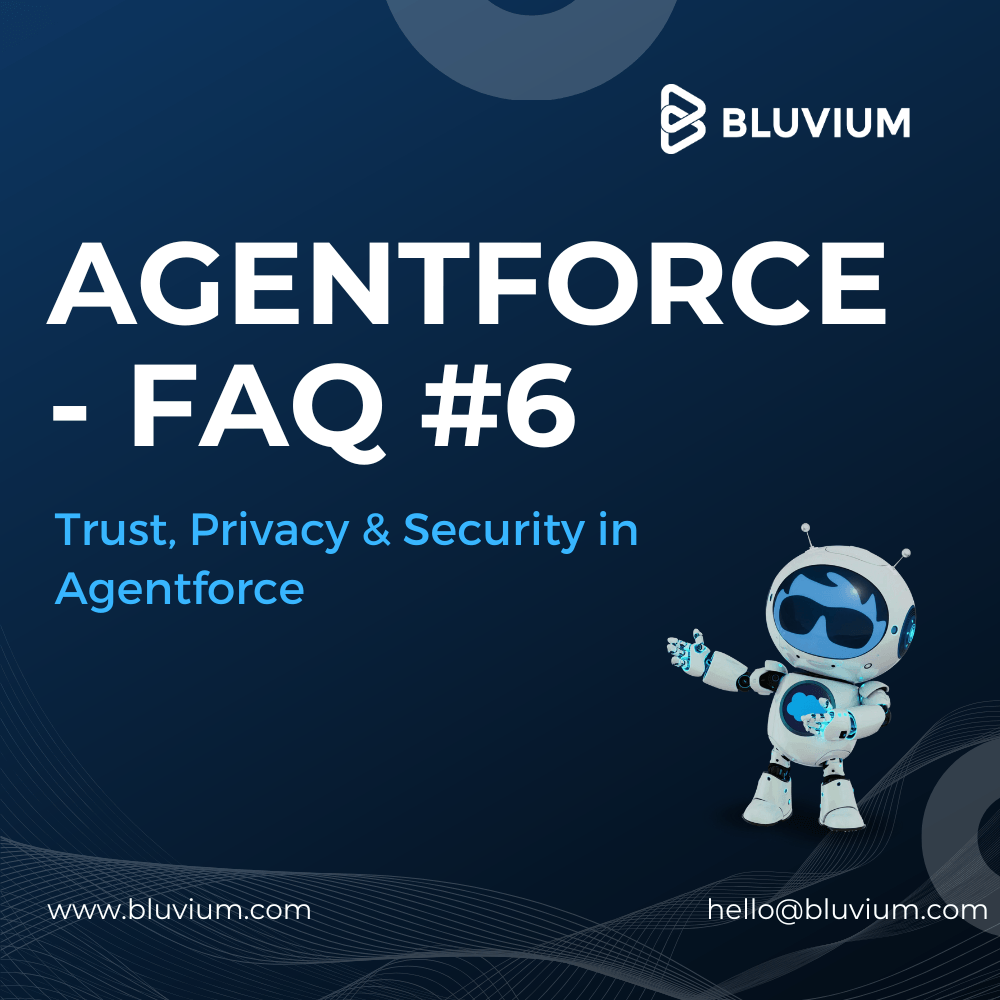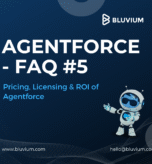
Agentforce FAQ #6 – Trust, Privacy & Security in Agentforce
As part of our ongoing Agentforce FAQ series, many organizations—especially in regulated sectors like financial services, healthcare and government—ask: “How secure and compliant is Agentforce? How does it handle data privacy and trust for enterprise-grade use cases?” In this blog we unpack how Agentforce supports privacy, security, and governance across its architecture, policies and real-world usage.
Data Privacy & Zero-Retention
Agentforce is built on the foundation of Salesforce’s trusted cloud infrastructure and adheres to strict privacy controls. According to Salesforce’s “Agentforce Privacy FAQ”, Agentforce operates under the same Data Processing Addendum (DPA) as other Salesforce services.
Key privacy features include:
- Secure data retrieval and zero-retention: customer data processed by Agentforce isn’t used for model training or retained beyond the immediate task.
- Support for “Bring Your Own LLM” (BYO LLM): for organizations wanting full control, Agentforce supports models that run within the trusted boundary.
- Auditability & Masking: Sensitive information is masked before being passed to models; error-and-feedback logs are available for review.
Security & Governance Controls
Beyond privacy, Agentforce embeds robust security and governance capabilities:
- It leverages Salesforce’s global compliance frameworks—Agentforce & Einstein Platform are covered by certifications such as ISO 42001, ISO 9001, PCI and others.
- Guardrails are built-in: Agents operate within defined “topics” and “actions”, reject inappropriate prompts (harm or toxicity detection), and follow org-defined security policies.
- Data Cloud governance support: Admins can define attribute-based access (ABAC), data masking policies, purpose-based sharing and zero-copy external ingestion—important for sensitive data governance.
- Continuous monitoring: Audit logs, Usage tracking, and tool-chain integrations provide visibility and enable governance frameworks to oversee Agentforce deployments.
Best Practices for Regulated Deployments
For enterprises operating under strict regulatory regimes, following these best practices will help ensure safe and compliant Agentforce usage:
Define data domains & access policies – Identify which data Agentforce can access and under what context; segment out highly regulated data.
Use BYO LLM where required – If your industry or org demands full control over the model, deploy Agentforce with a “bring your own” configuration within your trusted environment.
Apply least-privilege and data-masking – Mask or obfuscate PII/PHI where possible; use dynamic masking for users and agents as needed.
Establish governance board & workload separation – Include business, IT, compliance stakeholders in oversight; track usage and exceptions via dashboards.
Monitor, audit & iterate – Use Command Center/monitoring tools to detect anomalies, ensure guardrails are functioning, and refine behavior.
Pilot with lower-risk workflows – Start with internal-facing or non-mission-critical agents to validate controls before extending to highly regulated use-cases.
Why This Matters
In an era where AI agents are being embedded into high-stakes workflows, trust and security aren’t optional—they’re mission-critical. Agentforce’s architecture is built to support enterprise-grade requirements. When implemented thoughtfully, it helps organizations accelerate transformation without compromising compliance or exposing sensitive data.
Want to talk about how Agentforce can meet your organization’s security & compliance needs? Email us at hello@bluvium.com





